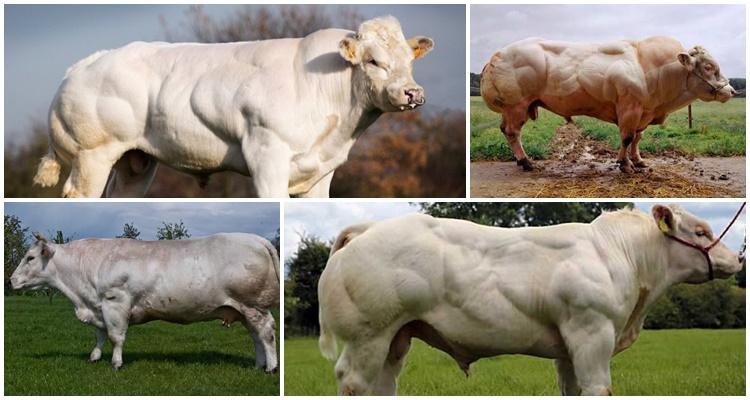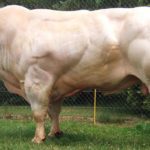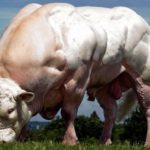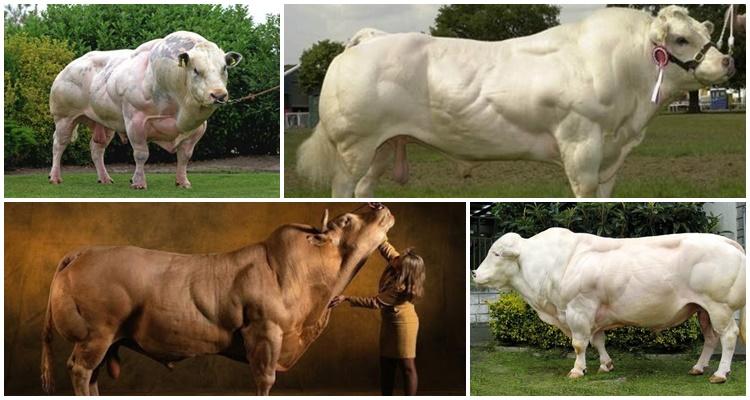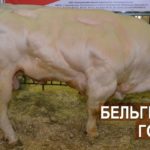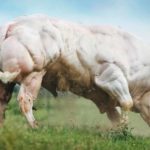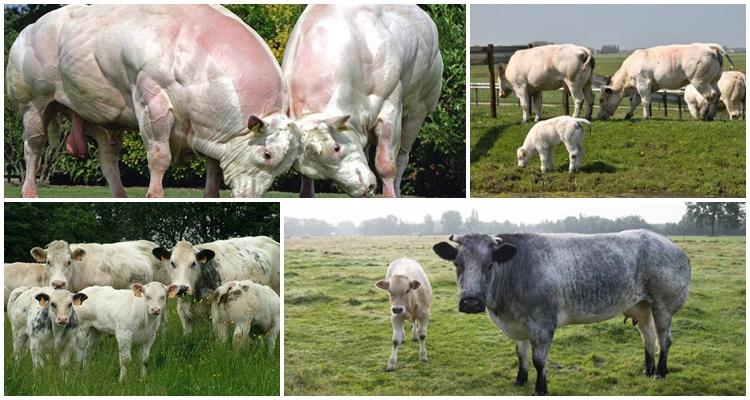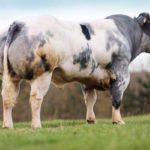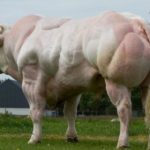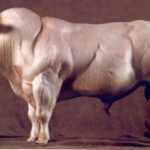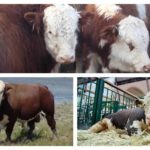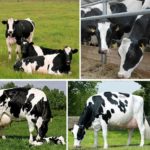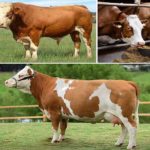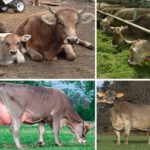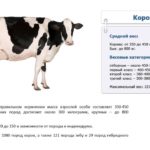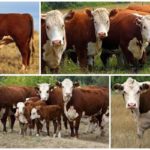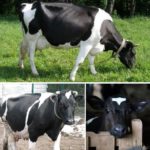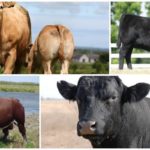Belgian Blue cows belong to the meat category. They were developed back in the nineteenth century. Since then, this breed has been very popular. It has a unique coat color and is considered a source of tasty and healthy meat. In order for the breeding of such animals to be successful, it is recommended to strictly adhere to the basic advice of experts and provide them with comprehensive care.
History of breeding and breeding of the breed
Work on breeding this breed began in Belgium back in the eighteenth century. At that time, they tried to improve the quality of Dutch animals with the help of the Shorthorn cow brought from England. This helped achieve some success. The Friesian cow was a dairy cow, and the Shorthorn cow was a beef cow. Due to the improvement of the species, scientists sought to obtain a universal breed that belonged to the meat and dairy sector.
Appearance and characteristics of the Belgian Blue cow
Belgian cows are characterized by an unusual appearance. It is associated with mutational changes in the area of protein reproduction. At the same time, muscle growth stops, the meat becomes lean, and the food is transformed into muscle. The main features of such animals include the following:
- Cows are characterized by a strong physique with pronounced muscles. Animals have a dry physique. They are characterized by the absence of subcutaneous fat and rapid growth.
- Calves weigh from 40 kilograms, and adult cows - 900 kilograms. The weight of some bulls can reach 1300 kilograms.
- Height at the withers reaches 1.5 meters.
- Today the breed is considered a meat breed. Previously, it was classified as a meat and dairy product.
- Milk yield is low. They do not exceed 4500 kilograms. However, more often they are 2000 kilograms.
Cows are characterized by a weakly expressed muscle relief. In this case, the slaughter yield reaches 70%. Animals have strong bones, large heads, and powerful necks. Bulls are distinguished by their strong relief and lack of horns.
Despite their terrifying appearance, representatives of this breed have a kind and calm disposition and do not show any aggression.
Advantages and disadvantages
Each breed of animal has certain pros and cons. Before purchasing, it is important to determine your breeding goals. Belgian Blue cows are suitable for meat production.
The main advantages of the breed include the following:
- good body structure and high degree of mobility;
- early development;
- accelerated weight gain;
- calm disposition;
- short pregnancy period;
- well developed muscles;
- compatibility in crossing to produce crossbred calves.
However, cows also have some disadvantages. Heavy weight often causes swelling in the legs. In addition, animals are considered heat-loving.
How to properly maintain and care for the breed
Basically, the technology for raising these animals is no different from other meat breeds. It is important to take into account that these cows are considered to be quite heat-loving. In the southern regions it is permissible to keep them in rooms without heating. However, in temperate zones it is important to take care of high-quality heating of the barn in winter.
It is not recommended to breed such cows in the northern regions. For most of the year they will experience a lack of physical activity, which will negatively affect their health.
When raising such cows, the following recommendations should be followed:
- The temperature in the barn should be +20-26 degrees.
- It is important to make straw flooring for the animals. Its height should be at least 40 centimeters.
- The distance from the barn to the pasture should be a maximum of 150 meters.
- Animals need a lot of grass. Therefore, it is important for them to provide ample walking space.
- It is important to have a veterinarian who will be able to provide assistance to the animal if necessary.
- It is forbidden to let pets out of the barn in cold weather.
Diet
Belgian Blue cows require roughage. These include the following:
- hay;
- silage;
- straw;
- beet.
Animals enjoy eating fresh, juicy grass. Before giving straw to the cow, it is recommended to chop it up and combine it with concentrated feed. It is also permissible to heat treat food or expose it to food alkalis. Fertilizers serve as a source of vitamins and minerals. This ensures full development of young animals and normalizes the properties of meat in adulthood. Bone meal, phosphate substances without fluorine, and tricalcium phosphate can be used as food additives.
In summer, the cow eats a lot of green fodder in the pasture. At the same time, for every 450-500 kilograms of weight there should be at least 50 kilograms of greens. If an animal produces more than 12 kilograms of milk per day, it is recommended that it additionally introduce food waste into its diet.
In winter, animals should eat 8-10 kilograms of meadow hay, 1 kilogram of wheat bran, 2 kilograms of carrots, 3 kilograms of beets, 500 grams of bread, 4 kilograms of spring straw. The diet should also contain 8 kilograms of food waste and 5 kilograms of silage made from forbs.
Cow feed It is recommended to add a little salt, but the daily amount of salt should be no more than 70 grams.
It is recommended to provide animals with sufficient water. At the same time, it should be cool in summer and warm in winter.
Calving Features
Belgian Blue cows are typically characterized by heavy calving. Approximately 50% of calves are born by caesarean section.A large number of muscles provokes a narrowing of the pelvic lumen. Therefore, natural childbirth is not always possible. A cow's first calves are usually born at 28-35 months. Pregnancy is relatively short and lasts a maximum of 285 days.
Disease Prevention
To minimize the risk of developing pathologies, it is recommended to vaccinate animals in a timely manner. A veterinarian should examine the herd every 3-6 months. If individuals with suspicious symptoms appear, it is recommended to organize their isolation and invite a doctor for diagnosis. To avoid the development of mastitis, it is important to express milk efficiently.
Commercial benefit
Animals are characterized by high weight and a large amount of meat at slaughter. Therefore, breeding such animals is quite profitable. However, this is only true for Europe. In Russia, these animals are almost never bred because they have an exotic appearance and need a warm climate.
Where can you buy cows?
You can buy such cows in the following ways:
- Order a calf in Europe. This method is considered expensive. It is used exclusively by large farmers. One heifer or steer will cost about $2,000. Additionally, you will have to pay for transportation services.
- Purchase seed material in Belgium. Its price is 300-400 euros for 100 doses of sperm. The parcel is sent by mail. In this case, the biological material is packaged in a special container in which suitable conditions are maintained to maintain its viability. The sperm is then used to impregnate regular cows.
Popular myths about the breed
Many farmers refuse to breed such cows because they have many prejudices about this. The main myths include the following:
- The cow will die quickly. In reality, such animals have the same life expectancy. In addition, they produce completely viable offspring.
- The limbs of the animals become very swollen. In fact, the swelling is not too pronounced and can be easily treated.
- The meat and milk of such cows are harmful. In fact, the gene that is responsible for building muscle does not affect a person's health.
The Belgian Blue cow is a unique breed that produces a lot of tasty and healthy meat. To raise these unusual animals successfully, they require quality care.

